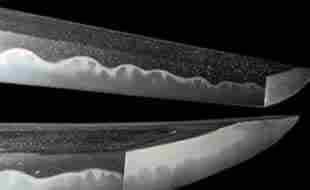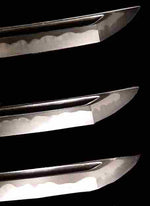Shinken Quote Request
555-555
Share:
Do you prefer an antique or a custom made blade? Are you a collector or a practitioner? We each have our own reasons for obtaining a great Japanese sword.
The process requires excellent communication - there's nothing "cookie cutter" about selecting and procuring the blade that is right for you. Therefore the system can't be and shouldn't be wholly automated.
Our quote process allows us to ask the basic yet essential questions that starts a journey towards proper smith selection and the eventual acquisition of a Japanese smithed blade.
Each of us has a different and yet imperfect knowledge of these blades. Often books detail explanations of what a blade's pattern looks like. This is very different from what within a smiths power to control and produce.
Besides the science of metallurgy, there is art, craftsmanship, and for lack of a better explanation, "magic" that takes place every time molten steel is in the oven and every time the aiatori (roughly quenching) process is applied. Like people, every blade is different and in our opinions at least, has its own personality.
The Japanese sword can be complicated. The marketplace is replete with competing claims and fraught with false information. Caveat Emptor, "let the buyer beware" is a real thing in the Japanese sword world from unscrupulous predators. More benignly, and arguably culturally, Japanese smiths are free to set their own standards as well. One smith may find a work with a blemish to be acceptable, as you are buying the name of the smith, not the quality of the blade, whereas another smith will refuse to put his name "mei" on a blade that doesn't meet his exacting standards.
Polishers, habaki (sword collar) makers, the craftspeople that make the wraps and work the wood and apply the lacquer all come in various grades of skill and this is becoming more apparent every day as fewer folks desire the lock apprenticeships and poor working conditions associated with perfecting the skills needed to do superior work.









